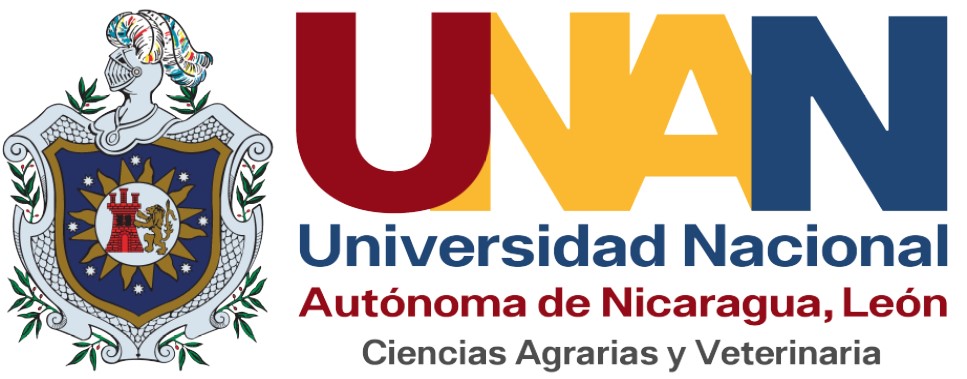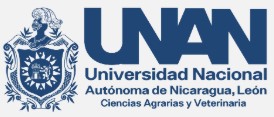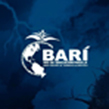Estimación in vivo de la canal porcina por el método de ultrasonografía: Un Enfoque de la Ecointensificación en Bioeconomia Porcina
DOI:
https://doi.org/10.5377/ribcc.v5i10.8966Palabras clave:
Predicción, Canal, Porcino, Espesor muscularResumen
En este estudio se analiza la relación entre el espesor de grasa subcutánea (EGS), espesor muscular (EM) y espesor de grasa subcutánea y espesor muscular juntos (EGSM), medidos con ultrasonido en un solo punto anatómico de cerdos vivos y los parámetros más importantes de la canal . En nuestro experimento utilizamos cerdos híbridos de las razas Pietrain, Landrace y Yorkshire en cantidad de 25 animales de ambos sexos. Los resultados del estudio sugieren que los parámetros de la composición de la canal aquí analizados están altamente correlacionados con el espesor de la grasa subcutánea medida con el ultrasonido en la última costilla del musculo longuísimo dorsal en el lado izquierdo del cerdo vivo (r = 0.53 - 0.67). La correlación múltiple del modelo de predicción de regresión lineal entre los parámetros de la canal y el espesor de grasa dorsal fue (0.74) y el coeficiente de determinación mostró suficiente capacidad de predicción (R2 = 0.55). Los modelos de predicción de regresión lineal de los componentes de la canal con el espesor muscular obtuvieron baja capacidad de predicción (R2 = 0.23). Igualmente en el modelo de regresión del espesor de grasa subcutánea y espesor muscular juntos ( R2= 0.25). Entre las correlaciones más importantes encontradas están: lomo derecho, carne clase A (r = 0.80), peso vivo y canal entera (r = 0.85) paleta derecha y carne clase B (r = 0.88) siendo este patrón repetitivo en todas las correlaciones de las mediciones ultrasonografica y los componentes de la canal.
Descargas
Métricas
Citas
López-Bote., A. Daza.: Effect of feeding system on the growth and carcass characteristics of Iberian pigs, and the use of ultrasound to estimate yields of joints. Meat science. 72, 2006, p 1-8. https://doi.org/10.1016/j.meatsci.2005.04.031
Sather, A. P., H. T. Fredeen, A. H. Martin.: Live animal evaluation of two ultrasonic probes as estimators of subcutaneous backfat and carcass composition in pigs. 1982; Canadian Journal of Animal Science P.82-114.
López G., Rubio M. (1998). Tecnología para la evaluación objetiva de las canales de animales de abasto. Vet.Méx. 29, 1998, p. 287.
Londoño J., Velásquez C. (2013): Clasificación y valoración de la calidad de canales porcinas en Colombia, monografía para optar al título de especialista en gerencia agropecuaria, 2013, p. 70.
Gérard D.(2001) Clasificación de las canales porcinas en Francia y en Europa. Memorias 9° Seminario Nacional de Desenvolvimiento de Suinocultura. InstitutTechnique du Porc Francia, 2001 25-27 de abril de 2001. P 6-9.
Jogal S.M, Kennedy B.W: (1987). Evaluación de los equipos de medición eléctricos en la predicción de la composición de la canal en cerdos vivo, animal production, 1987, 45, P 97-102
Mejía G.C.A.; Montaño B.M.; Velázquez M.P.A. y Cuarón, I.J.A.: Estimación in vivo del rendimiento de las canales porcinas mediante ultrasonografía. Téc. Pecu. Méx. 1999, 37:2. P 31.
McLaren D.; McKeith F.; Novakofski J. Prediction of CarcassCharacteristics at Market Weightfrom Serial Real-Time Ultrasound Measures of Backfat and Loin Eye Area in the Growing Pig. Journal of Animal Science.67, 1989, P, 1657-1667.
Swantek P.; Crenshaw J.; Marchello M.; Lukaski H.(1992). Impedancia bioeléctrica: un método no destructivo para determinar la masa libre de grasa de cerdo de mercado y cerdo cadáveres vivos. J Animsci. 70.1992. P 77-169.
Boland M.; Foster K.; Schinckel.; Wagner J.; Chen W.; Berg E.; Forrest J.(1995) Técnicas de evaluación de la canal alternativa: Las diferencias en las predicciones de valor. J anim sci.73, 1995. P 44.
Ordenes L.:(2005). Evaluación del espesor de la grasa dorsal y peso vivo en jabalí puro y en mestizos desde las 17 hasta las 39 semanas de edad, memoria presentada a la facultad de medicina veterinaria de la universidad de concepción para optar al título de médico veterinario; Chillan-Chile, 2005, P 6.
Higbie A.; Bidner T.; Matthews J.; Southern L.; Page T.; Persica M.: Sanders M.; Monlezun C. (2002). Prediction of swinecarcass composition by total body electrical conductivity. J. Anim. Sci. 2002. 80 P.113.
Youssao I.; Verleyen V.; Verleyen P.: Prediction of carcass lean content by real-time ultrasound in Pietrain and negative stress Pietrain. Animal Science. 2002, 75 P 25. https://doi.org/10.1017/S1357729800052796
Definición canal porcina [en línea] http://www.uco.es/zootecniaygestion/ [citado el 20 de marzo de 2015]
Escáneres de ultrasonido [citado en línea] http://www.cancerquest.org/index.cfm?page=3422&lang [citado el 19 de marzo de 2015]
Zúniga-González, C. A., Durán Zarabozo, O., Dios Palomares, R., Sol Sánchez, A., Guzman Moreno, M. A., Quiros, O., & Montoya Gaviria, G. D. J. (2014). Estado del arte de la bioeconomía y el cambio climático ISBN 978-99924-28-39-9, ISBN 978-99924-28-40-5, pp. 20-329) Editorial Universitaria UNAN León.
Universo porcino (2015). Consumo mundial de carne porcina [en línea] http://www.aacporcinos.com.ar [citado el 23 de marzo de 2015]
Central American Data (2015). El principal productor y consumidor mundial de carne [en línea] http://www.centralamericadata.com [citado el 20 de marzo de 2015]
UCO (2015). Definición canal porcina [en línea] http://www.uco.es/zootecniaygestion/ [citado el 20 de marzo de 2015]
ESCI (2015).Escáneres de ultrasonido [citado en línea] http://www.cancerquest.org/index.cfm?page=3422&lang [citado el 19 de marzo de 2015]
Walder D N, Dikeman M E, Schalles R R, Olson W G, Houghton P L, Unruh J A and Corah L R 1992 Validation of Real - time Ultrasound technology for Predicting Fat thicknesses, Longissimus Muscle Areas and Composition of brangus bulls from 4 Months to 2 Years of Age. Journal of Animal Science 70: 3044 – 3054, disponible en: http://www.journalofanimalscience.org/content/70/10/3044.full.pdf
Dios Palomares, R. , Alcaide, D., Diz, J., Jurado, M., Prieto, A., Morantes, M., & Zúñiga, C. A. (2015). Análisis de la eficiencia de sistemas agropecuarios en América latina y el Caribe mediante la incorporación de aspectos ambientales. Revista Cientifica de la Facultad de Ciencias Veterinarias de la Universidad del Zulia, 25(1), 43-50.
Sloniewski, P., & Zielinski, P. (1997). Remote effect of brain retraction on regional cerebral blood flow and cerebrovascular reserve on single photon emission computed tomography. Surgical Neurology, 48(5), 511-513.
Demo P, Krška P, Poltársky J and Borecký A 1993 The use of an echocamera for in vivo prediction of some carcass characteristics in pig. Živoc 38: 645 - 654.
Publicado
Cómo citar
Licencia
Derechos de autor 2019 Revista Iberoamericana de Bioeconomia y Cambio Climático

Esta obra está bajo una licencia internacional Creative Commons Atribución-NoComercial-CompartirIgual 4.0.
Copyright © 2025 Rev. iberoam. bioecon. cambio clim. Universidad Nacional Autónoma de Nicaragua León (UNAN-León), Area de Conocimiento de Ciencias Agrarias y Veterinarias/ Area Especifica de Agroecología y agronegocios /Centro de Investigación Ciencias Agrarias y Veterinarias. Dirección Académica. Departamento de Investigaçión. Unidad de publicaciones y eventos cientificos.












 EDITORIAL
EDITORIAL  e-ISSN
e-ISSN


 COPYRIGHT
COPYRIGHT  Este trabajo está licenciado bajo una Licencia Internacional
Este trabajo está licenciado bajo una Licencia Internacional 












